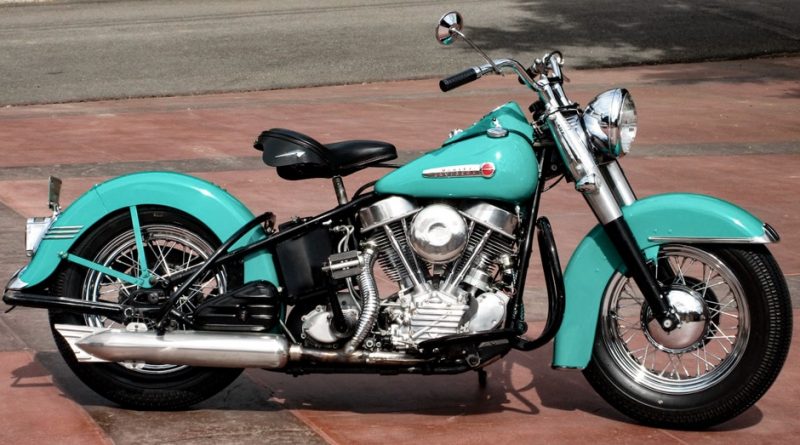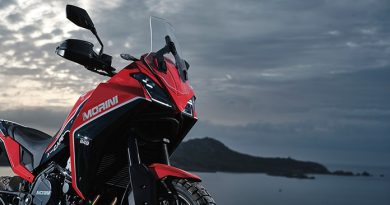Harley-Davidson Panhead – The Most Recognized Motorcycle in the World
Faced with a back catalog of some of man’s most iconic motorcycles, choosing your favorite model, Harley-Davidson, can be a real dilemma. That is until you see the Panhead.
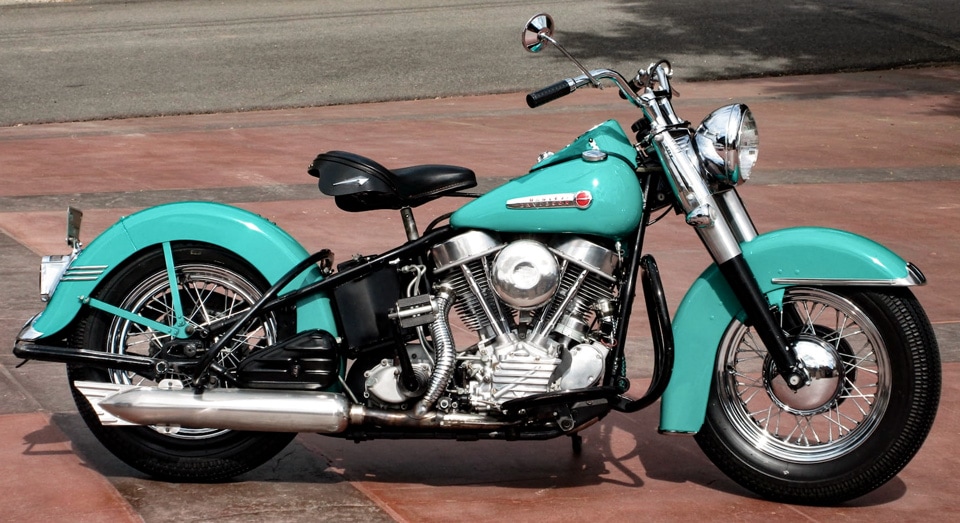
Years in Production: 1948-1965.
Engine Size: 61ci and 74ci.
Horse Power: 50hp-55hp.
What’s the Big Deal? Hydraulic forks, rear suspension, hydraulic brakes, handlebar clutch, need I go on?
Famous Harley-Davidson Panhead Riders: Jerry Lee Lewis, Cliff Vaughs, Valerie Thompson.
Harley-Davidson Panhead Fun Fact: The company that made the Panhead’s hydraulic fork internals also made them for the P-51 Mustang fighter.
So what did the Panhead bring to the table?
Let’s begin by looking at the obvious inclusion. The redesigned one-piece rocker cover, which not only gives the bike its name, but was also meant to put an end to the rocker leaks that plagued the Knuckle.
The other problem that hounded its predecessor was, of course, overheating. The new oval pie-tin covers sat on top of the second significant innovation, cast aluminum alloy heads.
With huge cooling fins cast into the alloy heads, their ability to dissipate heat was head and shoulders above the old Knuckle. This mix of alloy heads and cast iron cylinders brought about its unique problems though.
Cast aluminum has a thermal conductivity rating of 160, while cast iron comes in at a mere 52. This difference resulted in the cylinder head heating up and dissipating heat three times faster than the cast iron barrels.
The outcome being oil leaks, with gaps created in the gasket surface as both metals react to heat.
The Knucklehead may have proved to be a game-changer with its long list of innovations, but when it comes to new technology, the Panhead took the ball and ran.

Another knock-on effect is the creation of valve lash. Here, the valve gear struggles to stay in contact and operate the valves. To counter this, H-D developed hydraulic lifters to take up the slack.
No More Valves to Adjust
Another four years would pass before the lifters got moved to the bottom of the valves. This move resulted in them working perfectly. Better yet, that was the last time any OHV Harley owner had to adjust a valve.
The cylinder heads continued to cause problems, but at least the Knucklehead’s bottom end was tried and tested and used on the Pan.
In its first year of production, the Harley-Davidson Panhead was available in 61ci and 74ci options. The harder working 74ci engine was producing around 50hp and featured a more robust twin-gear oil pump outboard of the crankcase.
Related: Enjoy the Harley-Davidson engine sound from 1903-2020 right here

The stunning new Panhead engine was also taller than its predecessor. As a result, the frame got stretched and widened. The resulting ‘wishbone’ frame became another of the Panhead’s unique attributes.
During its 18-year production run, the H-D Panhead introduced some of the factory’s most landmark designs and model names.
By the time the Pan was in its second year of production, Harley had waved goodbye to springer forks. The replacement was the cowl-covered hydraulic fork, which they named the Hydra-Glide. A visual reference that still graces Harleys 70 years on.
The Harley-Davidson Panhead Models
When it comes to naming a new model it’s not easy getting it right every time, just look at the Ulysses, Muscle and Deuce! However, in its 18 year production run the Panhead gave us three of Harley-Davidson’s most iconic models.
| Year | Model | Reason For Model Name |
| 1949 | Hydra-Glide | Marked the switch from springer to hydraulic front suspension. |
| 1958 | Duo-Glide | The first Harley to get a twin shock back end. |
| 1965 | Electra-Glide | The first Harley engine fitted with an electric starter. |
Birth of the Hyrda-Glide
A decade later, 1958 appears to be a bumper year for the Panhead. With riders demanding more comfort, the twin rear shock Duo-Glide signaled the rigid frame’s demise.
This year also saw the introduction of the handlebar-mounted clutch and foot change combination. Hydraulically actuated drum brakes front and back also arrived in the nick of time as the Panhead neared the 600-lbs mark.
As for power output, the 74ci FL model was now producing around 55hp. But that’s not the whole story. With 63-ft.lbs of torque and peak power arriving at a mere 4,800rpm, the Duo-Glide was long-legged and unflustered.
It is no wonder Harley’s own high mileage club (started almost a decade earlier) was awarding 100,000-mile pins to large numbers of Panhead pilots.
Panhead gets an Electric Foot
In 1965, came one of the biggest upsets for hardcore H-D traditionalists; the electric start. To operate the new electric start, the bike featured a 12v electrical system. It also featured a considerable-size battery hidden behind a chrome cover on the right side.
By the last year of Panhead production, Harley had gone about as far as they could go. The bike was comfortable, thanks to its front and rear suspension. It was also now reliable enough to clock-up serious mileage.
By now, the Pan had pretty much run its course. Engine changes, rear suspension, and an electric start adding almost 200-lbs to its weight.
The Harley-Davidson Evolution: The Bike That Saved The Motor Co.

Harley’s flagship was slow and bloated compared to the opposition. It would take something drastic to keep the manufacturer’s place as king of the hill. That radical change was the Shovelhead, but that’s a whole other story.
The Panhead Emerges into a Perfect Storm
If technical innovation is all it takes to make a motorcycle a hit, everyone in 1974 would have been riding a Van Veen. Many bikers haven’t heard of the Dutch-built rotary Wankel-powered bike, proving that a tricky engine alone isn’t enough.
For a motorcycle to strike a chord with motorcyclists, many elements have to align. The Harley-Davidson Panhead emerged into a perfect storm.
The first three years following WWII proved to be a rocky transition for America. Rationing ended in 1945, and 12 million returning veterans were looking for work in a downturned US economy.
By 1948, President Truman and the New Deal Coalition had put America back on the road to prosperity. The years 1948-1960 saw the US economy kick into overdrive. Wages were good, leisure time abundant, and a new network of highways under construction.
Related: How to clean, condition and care for leather saddlebags
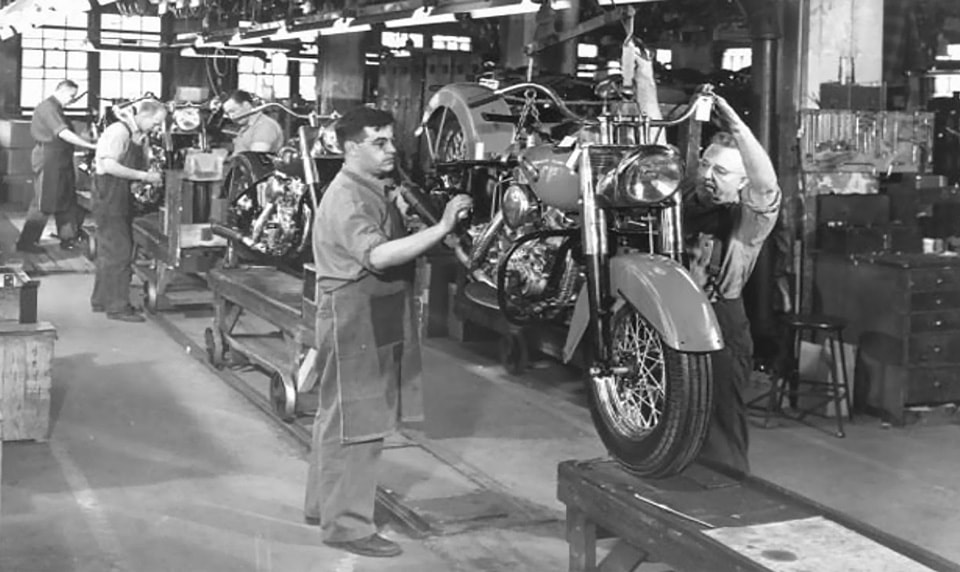
The dawn of this new affluent era dovetailed with the Pan’s launch and continued throughout for its production run. The new Harley-Davidson Panhead became a hit straight off the bat, and even at $650, demand was high. In the first production year, 4,321 61ci EL’s and 8,071 74ci FL’s rolled off the line.
In 1951, Harley applied to the US Tariff Commission to slap a 40 percent import duty on large capacity British bikes feeling they posed a threat to sales. The competition was now under control. Add to this, a new network of roads crisscrossing the country, and the comfortable Pan was free to reign as King of the highway.
Providing the Perfect Canvas for Customizing
The final element of this perfect storm relates to customizing. Bob-jobs or bobbers, as we now call them, first appeared in the early 1930s. Yet, it wasn’t until after WWII that the bobber and hot rod craze took off.
A bob-job (cutting down or junking all the factory model’s unnecessary weight) was the easiest way to create an individual-looking bike. Thanks to bobber pioneers such as Von
Dutch, chrome, pin-striping, and metal-flake paint jobs were soon on the bobber menu.
During their 18-year production run, 98,959 Harley-Davidson Panheads (including police models) rolled off the line. Add to this, a nationwide network of new roads, calling to upwardly mobile motorcyclists to explore.
The fast-growing custom scene also found the Panhead to be the perfect blank canvas. It guaranteed the bike’s place in history.
Next, arrived the final piece in the jigsaw, which secured the Panhead’s place in the hall of fame even after the last model rolled off the production line.

This notoriety came with the commissioning of African American bike builders Cliff Vaughs and Ben Hardy. Their brief was to create two customized Harleys for a low-buck movie project.
The duo bought four ex-police Hydra-Glides at an LAPD auction. The plan was to build two as full-on custom bikes and use the remaining two as back-up/stunt bikes.
Cast arguments, mass crew sackings, and drug-fuelled shenanigans hampered production, almost killing the movie before it hit the silver screen.
The most Recognised Motorcycle in the World
Against all the odds, Wyatt’s kicked-out Captain America chopper, and Billy’s red and yellow bobber made it to movie theaters. Despite both bikes getting stolen before the shooting of the final scene, ‘Easy Rider’ went on general release in 1969. This iconic movie made the two customized Harley-Davidson Panheads the most recognizable motorcycles in the world.
Such is the endearing nature of the Pan; some can’t bear to see it go. Today, several engine manufacturers, including S&S, Accurate Engineering, and Revtech, all offer modern versions of the classic power plant.
Fast forward to 2007 and another motorcycle movie, Ghost Rider, featured a Panhead chop based on the Captain America bike. During the movie starring Nicholas Cage, Peter Fonda (aka Wyatt in Easy Rider), appeared as the devil.
These Panhead clones have endured the ultimate test on several occasions. Veteran top fuel drag racer, Steve ‘Doc’ Hopkins, still holds the record for the world’s fastest quarter-mile Pan. In 2007, Valerie Thompson, took her 1,966cc Accurate Engineering Panhead to a land speed record of 161.7mph.

Let’s not also forget other celebrity tie-ins. Elvis Presley owned at least three Panheads, including a Hydra, Duo, and an Electra Glide. The King’s female co-star, Anne Margaret, was also a big Pan fan. A real-life biker, she often shared the Las Vegas show stage with her ruby red Springer, Panhead Chop.
The King and the Killer
In 1959, Elvis and Jerry Lee Lewis were both given FL Panheads as a gift from Harley-Davidson. Jerry Lee (known to his fans as the Killer) was given his first, which apparently left the King feeling, all shook up!
Fortunately for JLL though, he got to enjoy his Pan a little longer. But, after 55 years of ownership, Jerry was too weak to kick it over. The as-new ’59 Duo-Glide sold at auction in 2015 for a staggering $358,000!
The Harley-Davidson Twin Cam: Bigger, Bolder And Better?
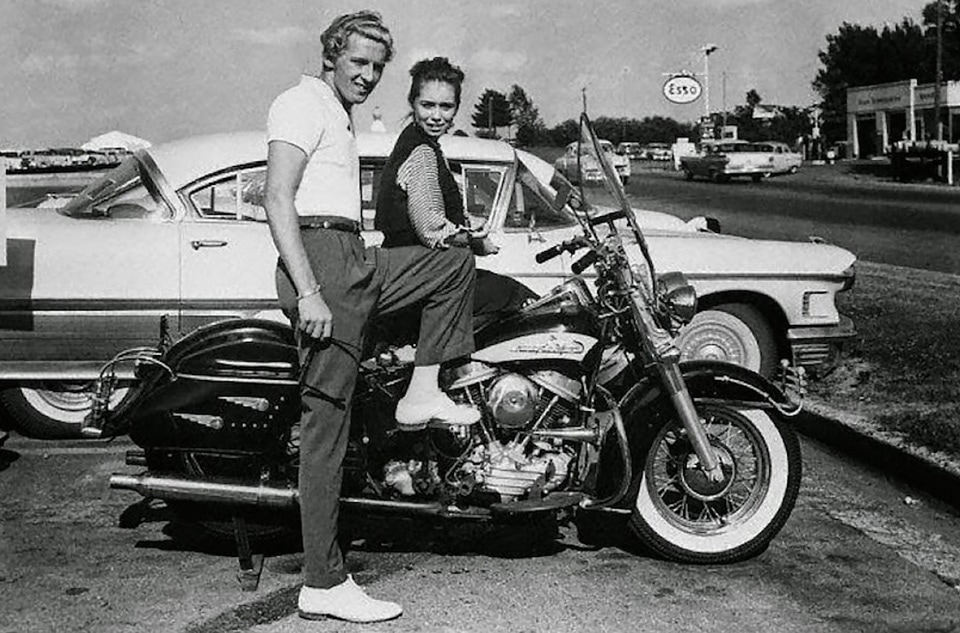
Even today, many stars of the silver screen jump at the chance of draping themselves over a motorcycle. For some, though, it’s not just a photo opportunity, but the real deal.
Take, for instance, Brad Pitt. The A-list actor who went to world-famous Zero Engineering for his unique Pan lowrider. And Ewan McGregor’s Panhead chop built by the late, great Indian Larry.
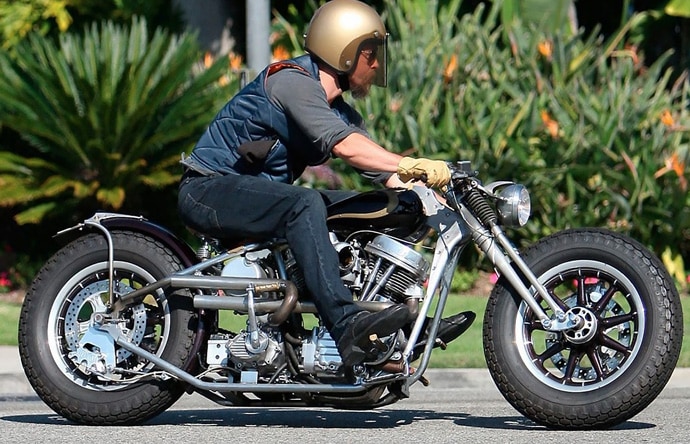
One thing’s for sure; you won’t find Jason’ Aquaman’ Momoa going down the chromed-out chop look. The Hawaiin actor’s stable of vintage Harleys all look like he dredged them up from the seabed.

H-D purists may argue that during its production run, the Panhead went from a lean, mean hardtail to an overweight tour bus. There is one thing everyone agrees on though.
That’s it, the Panhead motor is hands-down, one of the most handsome engines ever built.
Related: TOP-10 Retro Motorcycle Gloves
The post Harley-Davidson Panhead – The Most Recognized Motorcycle in the World appeared first on Old News Club.

